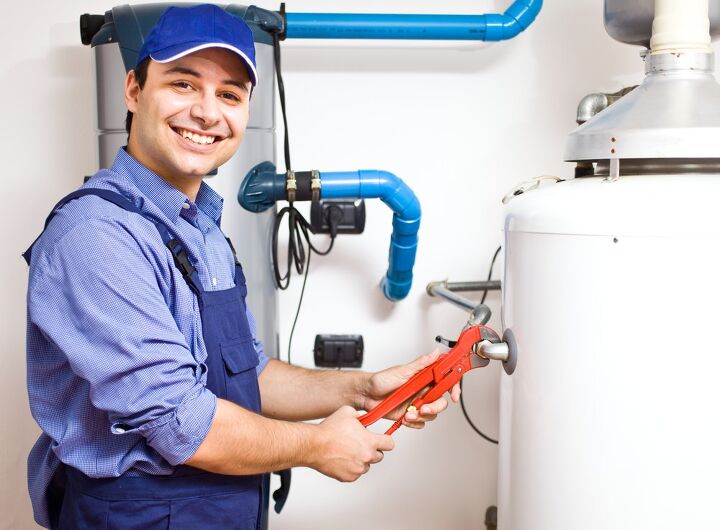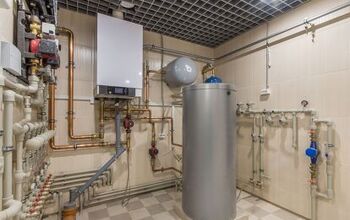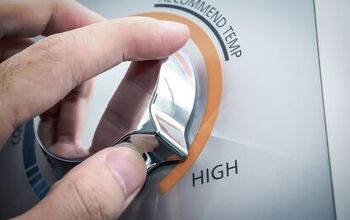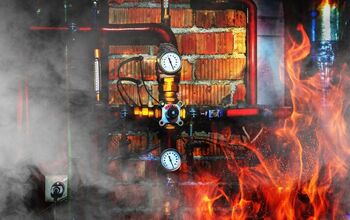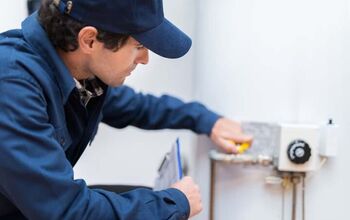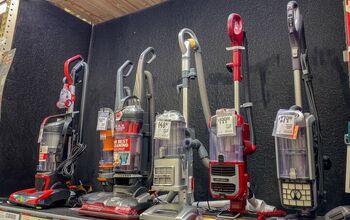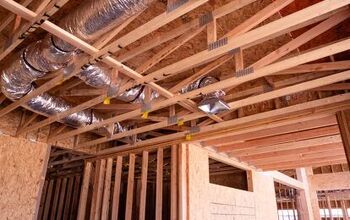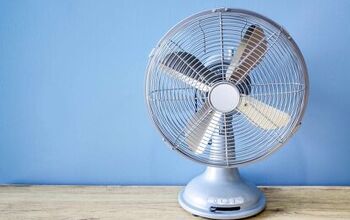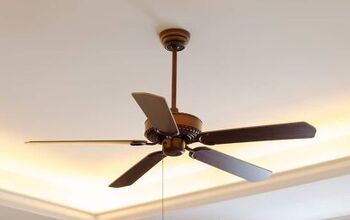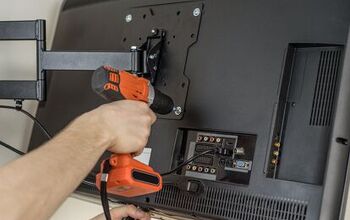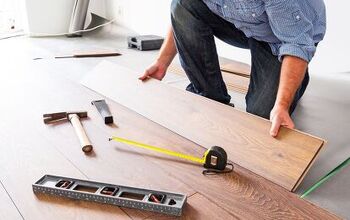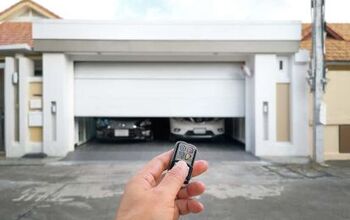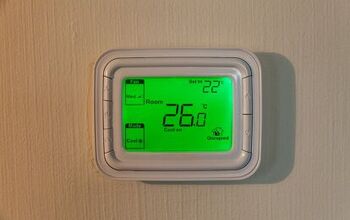Hot Water Heater Not Filling Up? (Possible Causes & Fixes)

Hot water is something that all homes and most businesses need access to these days, and this is the main reason why hot water heaters are indispensable fixtures to both home and business owners. Just think about how many appliances depend on hot water in a home: the dishwasher, the washing machine, the shower, the kitchen and the bathroom sinks.
But when a hot water heater is not working properly, this means a home or business will not have access to hot water. One of the problems that a hot water heater may experience is the tank not filling up properly. A few things can cause this problem, so here’s what you should do when your water heater is not filling up properly.
When a water heater doesn’t fill up properly, this may be due to a leak, air being in the tank, frequent filling and draining of the tank, or a clogged cold feed pipe. It’s best to get a water heater that isn’t filling up properly looked at by a professional plumber, as running a malfunctioning system could be dangerous.
Do You Need Water Heater Repair Services?
Get free, zero-commitment quotes from pro contractors near you.

How to Know a Hot Water Heater Isn’t Filling up Properly
If you’re concerned that your water heater isn’t filling up properly, you should first gain access to the inside of your water tank. This may not be the easiest task, depending on the kind of water heater you have, but it is the easiest way to determine whether or not your heater is filling up properly.
There are other signs that indicate a heater may be having a problem with filling, and these are listed below. If you notice any of these signs and you don’t know how to address them on your own, get in touch with a professional plumber.
The Signs Which Indicate a Water Heater Is Having Filling Problems
- If there’s a puddle of water around your hot water heater, this is a common sign that your system is experiencing an issue. If the water is coming from the tank, then in all likelihood your system isn’t storing and/or dispensing hot water properly.
- A malfunctioning system may also be indicated by low water pressure.
- If you don’t have a lot of hot water coming out of your system, this could be because your system’s tank isn’t being filled enough.
- When you hear uncommon noises coming from the water heater, a malfunction is likely the cause. You may, for example, hear creaking, rattling, banging, knocking, and whining coming from your system.
- If your water heater is making no noise, this can also be a problem. A water heater is generally supposed to hum low, and if you don’t hear this humming, this absence could be because the tank is not filling up the right way.
- If your water heater is working but water is getting cold before it reaches the taps in your home, there may be a problem with how much water is being stored in your system.
Why Water Heaters Don’t Fill Up Properly Sometimes
If your water heater is not filling up properly, a quick fix may be all that’s needed. But if the issue is more significant, you can always get help from a professional plumber.
The issue that’s causing the problem could be so severe that replacement of the system will be warranted. This is usually what happens when a 10+ year old system begins to malfunction. If your hot water heater isn’t filling up properly, here are some of the reasons that could be causing this.
There’s a Leak Somewhere
If your system won’t fill up with the right amount of water, this could be because there is a leak somewhere. The leak may be in the tank or in the pipes. Look around your system to see if there are any puddles of water; these puddles may indicate where the leak is coming from.
Leaks often occur at the bottom of a water heater. If you don’t see any liquid coming from the bottom of your system, you should then look to the walls that are near your water heater; some water heaters are not near any walls, specifically those that are designed for use in basements, corners, and closets.
An adjacent wall may also be wet because of a leak in the pipe. Leaking pipes will be located near the top of a water heater.
Once you determine that the tank has not sprung a leak, you should go outside to see if any water is pooling around your home. Some water heaters utilize underground piping, and if these leak you’ll know so because there will be a pool of water above where the pipes are installed.
Fixing a Leaking System
The nature of the leak will determine the solution that’s needed. If, for example, an underground pipe is leaking, this will probably require a costly replacement. On the other hand, if a leak is due to a small crack in the tank, you may even be able to address this on your own.
In any case, if you discover a leak somewhere, you should get in touch with a professional plumber. They will be able to seal a leak, and if the leak is too significant, they’ll tell you to get a replacement hot water heater. They can even help you secure a replacement heater.
The Water Heater Keeps Draining and Refilling
Some water heaters will start to drain and refill continuously, and obviously, when this happens a heater will not have the proper amount of water in its tank. If your water heater is constantly running, even when no taps are calling for hot water, it’s likely that your system is experiencing this problem. Below is a solution to this problem.
Solution
When a hot water heater is running continuously in this fashion, it is often because the TPR valve is stuck in the OPEN position. This causes the water to drain from the tank, but because the system is not supposed to function in this way, water continuously pours from the system because it thinks that the tank is going to empty.
Older hot water heaters experience this problem more than those that are newer, and fixing a valve will only require some common household tools and a little bit of elbow grease. If the valve needs to be replaced, you can do this yourself, if you know how, or get a professional to help you.
Another cause of this water heater problem is that a tap has been left on somewhere in the home. If the problem persists once the tap is shut off, you’ll know something else is wrong.
Clogged Pipes
A simple glance at your water heater’s tank will not be able to tell you whether or not the pipes are clogged. In this instance, you should empty the tank and then check its bottom. If there is a lot of sediment buildup, there’s a good chance that this buildup is clogging your pipes and some of the valves too.
When this is the case, water can’t fill up the tank the right way, and nor can it drain from the tank properly. Clearing this sediment buildup and then flushing out your system several times are going to be necessary.
Do You Need Water Heater Repair Services?
Get free, zero-commitment quotes from pro contractors near you.

Related Questions
Sometimes, a water heater will not fill up with water properly, and unfortunately several things can cause this problem. For this reason, and others, owners of hot water heaters often have questions about their tanks, and some frequently asked water heater-related questions are answered in the sections below.
How is a hot water heater supposed to work?A gas-powered water heater utilizes a flame, and this sends hot air up a chimney which runs through the middle of the heater. By this chimney, the water is heated, and when one activates a hot water tap, cold water flows into the heater to replace the hot water that is now being poured.
Electric water heaters work in a similar way, but there is no heating chimney with these systems. Instead, these systems utilize electric heating elements.
Both of these water heaters utilize sacrificial anodes, and these rust faster than the materials used to make water heaters. Because these anodes are included, a hot water heater’s tank is protected from rusting.
Why do water heaters sometimes deliver cool water?Not having enough hot water may just be due to an issue with the thermostat. You might just have to simply adjust the thermostat to get the desired water temperature; a properly functioning heating element shouldn’t cause any problems.
On electric models, the thermostat is usually hidden behind an access panel on the side of the tank, and a layer of insulation will be covering this too. Unlike with gas models, an electric thermostat is set at the factory. These aren’t designed with frequently tinkering in mind, but sometimes you’ll have to do so to ensure your system runs properly.

Matt loves everything DIY. He has been learning and practicing different trades since he was a kid, and he's often the first one called when a friend or family member needs a helping hand at home. Matt loves to work with wood and stone, and landscaping is by far his most favorite pastime.
More by Matthew Mountain



